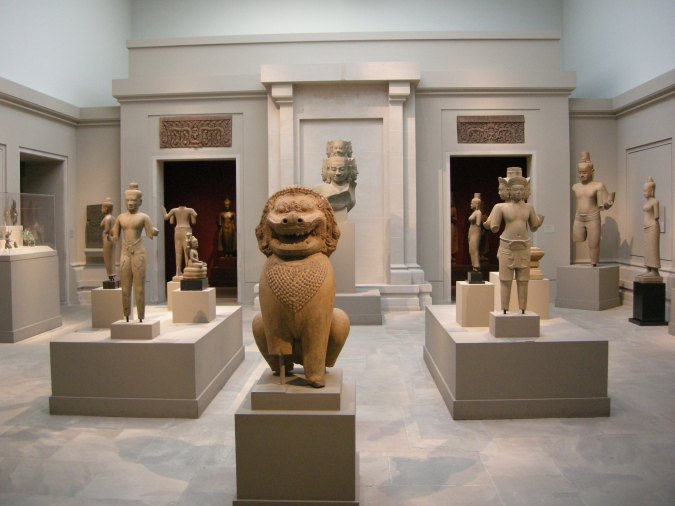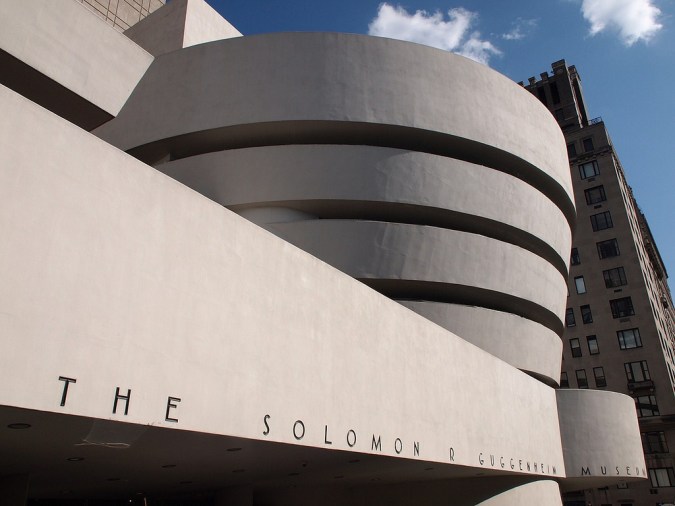On May 13, the Queens Museum was bursting with young families making feather amulets, dancing experimental hip-hop, and crafting their own instruments using Play-Doh and cables. It was the Catch the Cool family festival, an annual event where a host of arts-related activities and workshops are provided for free to families across New York City.
“It’s really great to see 5-year-old kids in a museum going crazy with their dance moves or making beats with an instrument they made,” said Felipe Quiroz, a sound engineer for Queens Museum. “Cool Culture comes here every year and provides resources for families to enjoy museums and art in a different way. They make it accessible. They can basically spend the whole day having a lot of fun for free and be exposed to a lot of things.”
But events like these, which make art accessible to underserved communities, may not exist next year. They’re at risk of being eliminated by Trump’s proposed eradication of the National Endowment of the Arts in the 2018 national budget. Organizations like Cool Culture rely on funding from the NEA to support their programming, which provides access to museums and art events to low-income communities. Nearly half of Cool Culture’s Family Pass holders, a card that gives free museum entry to eligible families, are Latinos.

“About 25% of our funding comes from government grants, and you can imagine that for a small non-profit like ours that is quite substantial,” Executive Director of Cool Culture Candice Anderson told me. “When we begin to think about the impact it will have on our organization, we always start with our families. It will inhibit our ability, or make it nearly impossible, to serve already vulnerable communities who are under siege increasingly under the current administration.”
Some believe NEA funding is being cut because art has the power to challenge authoritarianism.
If these budget cuts are carried out – which is very possible considering Republican control of the House and Senate – Cool Culture will have to rely on private donors to continue doing their work. So far, only 11 out of 234 Republicans have signed a letter in support of preserving the NEA. So, on May 25, Cool Culture will celebrate their UnGala event, an attempt to bring art patrons together to raise crucial funds for what is predicted to be a dire year for arts funding.
Trump is the second president since Reagan to suggest a full elimination of federal arts funding for the NEA and National Endowment for the Humanities (NEH), as well as the Corporation for Public Broadcasting. The NEA itself was allotted $148 million of the 2016 budget, a mere .003% of federal spending. The combined budgets of the NEA, NEH, and Corporation for Public Broadcasting amount to .016% of the federal budget. As broken down by a recent Washington Post report, “If you make $50,000 a year, spending the equivalent of what the government spends on these three programs would be like spending less than $10.” This begs the question: why are these programs being cut? Some believe it’s because art has the power to challenge authoritarianism, a word many have used to describe the current administration.

Certainly, the arguments put forth in support the cuts have taken a turn for the absurd. Consider The Heritage Foundation, a conservative think tank. Its list of 10 reasons to support the NEA’s elimination includes assertions like the “NEA is welfare for cultural elitists,” as well as accusations that it “funds pornography,” and that it actually “lowers the quality of American art.”
Giving pre-school kids the opportunity to visit the local arts museum is not cultural elitism.
Giving pre-school kids the opportunity to visit the local arts museum is not cultural elitism. In fact, Cool Culture uses a collaborative approach to create their programming by involving educators and community organizations – a far cry from any sort of elitism. Their work is premised on the idea that museums don’t create the culture, they provide spaces to share culture, a philosophy evident in their bookings. At the Catch the Cool event earlier this month, attendees could catch performances from local Ecuadorean dance group Ayazamana, as well as the East Harlem dance studio House of Duende. “Our programming has been successful in providing arts access to members of the Latinx community, to enrich New York City with their cultural backgrounds, and our goal is to make sure that in turn they have access to New York City’s Cultural resources,” Anderson said.

Next week’s UnGala event will honor author and philanthropist Reggie Van Lee and Cuban-American artist Teresita Fernandez. Fernandez is a former recipient of the NEA Individual Artist’s Grant from 1994, a grant that no longer exists. She said, “Organizations like Cool Culture that focus exclusively on access to culture for young children make it possible for entire generations to grow up in an environment where they can imagine becoming artists as well as learning to own and exercise their right to participate in culture.” Her most recent work, a glazed ceramic wall panel depicting fire titled “Fire (America),” is particularly pertinent to the discussion of opportunity, relevance, and voice in the United States. “In many ways, Fire (America) is precisely about who gets to define the American narrative, and who is systematically omitted. I’ve been working with these ideas in my work for a long time, and certainly, these inequities are nothing new. So if the work seems especially timely right now it’s perhaps because many people who have never had to think about these issues have been forced to post-election.”
“Resistance, organizing, and movement building, not fear, will promote the change we want to see,”
These inequities have forced many arts organizations to mobilize. Latino arts advocacy organization National Association for Latino Arts and Culture (NALAC) has been essential to the advancement of the Latino arts sector since 1989, and will also be greatly affected by the gutting of the endowments. In their press release “Fighting for the Future of Federally Supported Arts,” NALAC outlines actions to take as advocates of the arts. President of NALAC, Maria de Leon, explains that “on average, every NEA dollar is matched by nine dollars of investments from other sources.” So the ramifications of NEA funding are actually exponential. “Resistance, organizing, and movement building, not fear, will promote the change we want to see,” she said.
Actions on NALAC’s list include calling your congresspeople, showing up to their offices, protesting, signing petitions, and sharing your stories of how the arts have affected you personally. If you’re interested in seeing the progress and inclusion of Latinx arts, it is essential that art patrons support organizations like NALAC, Cool Culture, and events like the UnGala – otherwise we risk the erection of new Trump Towers in the wake of our communal art spaces. It’s already happening.




